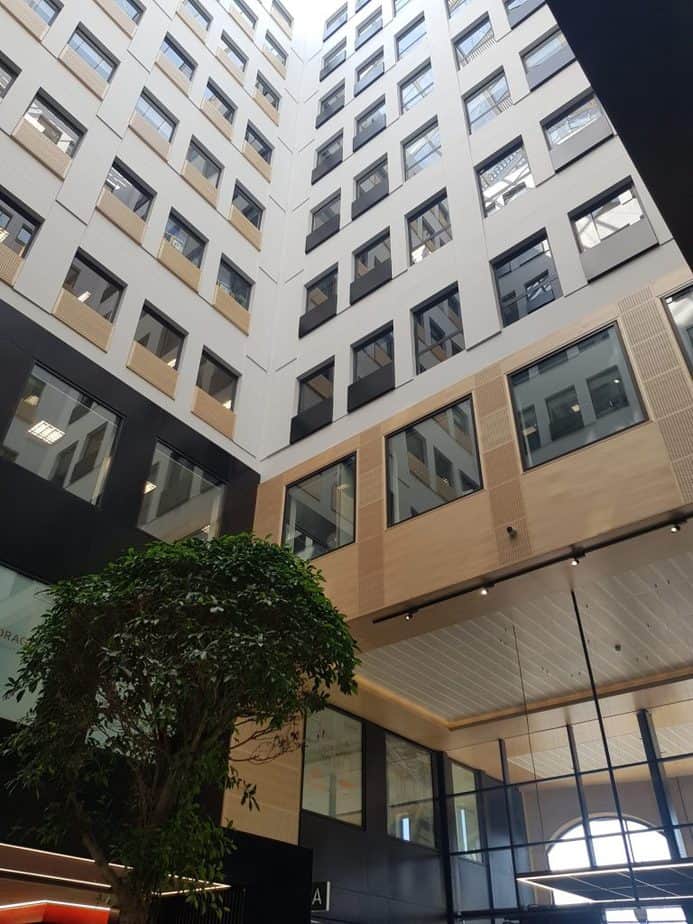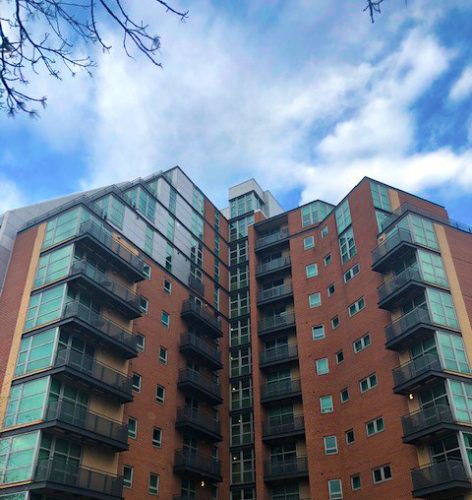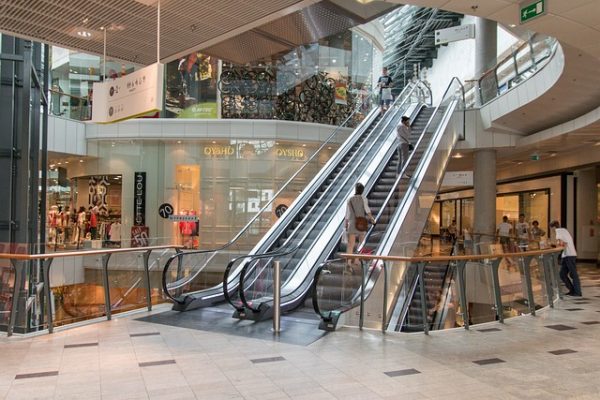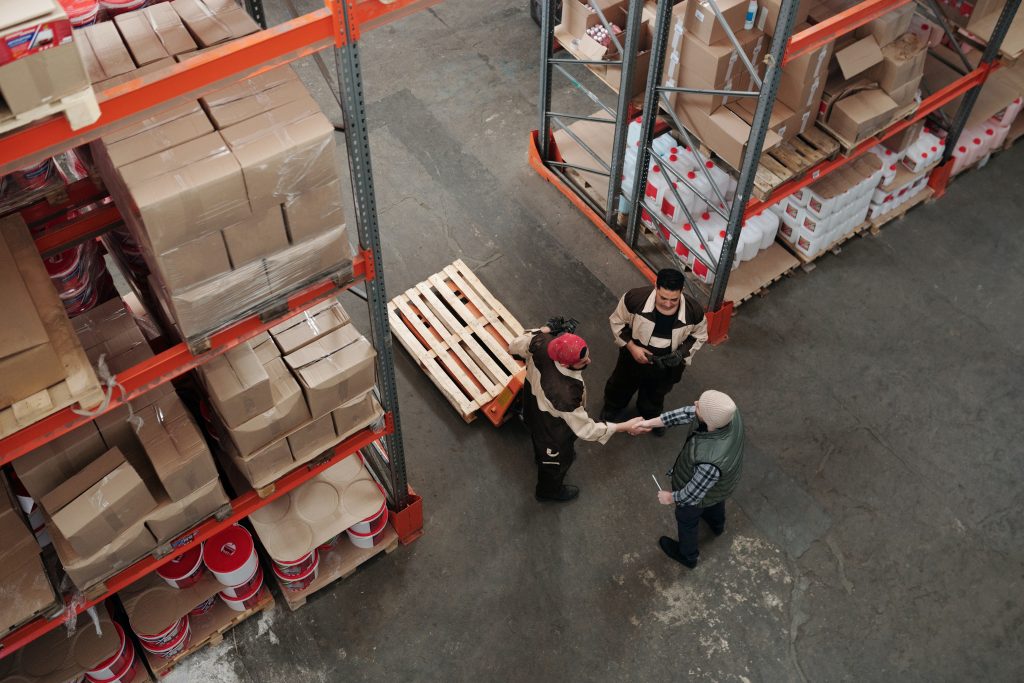What is Compartmentation?
Compartmentation refers to the practice of dividing a building into distinct sections, or compartments, using fire-resistant barriers. These barriers can include walls, floors, ceilings, and fire doors, designed to contain fire within a specific area for a certain period. This approach aims to slow down the spread of fire, smoke, and toxic gases, providing more time for occupants to evacuate safely and for emergency responders to control the fire.

Key Components of Compartmentation
Fire-Resistant Walls and Floors
Fire
Doors
Fire Stopping Materials
Smoke Control Systems & Barriers

Benefits of Compartmentation
Increased Safety: By containing the fire within a specific area, compartmentation significantly reduces the risk of the fire spreading rapidly throughout the building, thus increasing the chances of safe evacuation.
Protection of Property and Assets: Limiting the spread of fire helps protect the building structure and contents, potentially reducing the extent of damage and associated repair costs.
Enhanced Firefighter Effectiveness: Firefighters can focus on controlling the fire within a smaller area, making their efforts more effective and efficient.
Legal and Regulatory Standards
Many countries have building codes and regulations that mandate the implementation of compartmentation in certain types of buildings, such as high-rise structures, hospitals, schools, and other places where large numbers of people congregate. Compliance with these regulations is crucial for obtaining building permits and ensuring the safety of occupants.
Importance in Fire Safety Strategy
Compartmentation is considered a passive fire protection measure because it does not require any activation or mechanical operation to function; it relies on the built environment. However, its role is critical in the overall fire safety strategy of a building. While active measures like sprinklers and fire alarms play a crucial role in detecting and suppressing fire, compartmentation serves as the last line of defense, ensuring that if these systems fail or are overwhelmed, the fire’s spread is still hindered.
Educational and Awareness Initiatives
Despite its importance, many people are not fully aware of how compartmentation works or its benefits. Building managers, designers, and occupants should be educated about the essential role of compartmentation in fire safety. Regular drills, maintenance checks, and inspections should be conducted to ensure that all fire-resisting constructions are intact and functional.
Compartmentation acts as a silent guard in the face of fire hazards, providing critical time for evacuation and firefighting efforts. Its implementation is a vital aspect of building design and fire safety planning, underscoring the need for awareness and adherence to fire safety regulations. By understanding and appreciating the importance of compartmentation, we can enhance the safety and resilience of buildings against the devastating effects of fire.
Compartmentation Can Hold the Flames More Than 30 Minutes
Fire Resistance Ratings
Fire resistance ratings, measured in minutes or hours, indicate how long a building component can withstand fire exposure while maintaining its structural integrity and limiting the spread of fire and smoke. A common benchmark is the 30-minute fire resistance rating, which is often required by building codes for various structural elements.

Importance of the 30-Minute Fire Resistance
Evacuation Time
A 30-minute fire resistance rating is critical as it provides a crucial window for occupants to evacuate the building safely. This period allows for the activation of alarms, mobilisation of emergency services, and execution of evacuation plans.
Fire Containment
By containing the fire within a compartment for at least 30 minutes, the spread to other parts of the building or adjacent buildings is delayed, reducing the risk of a large-scale fire.
Life Safety
The primary goal of fire resistance ratings is to protect lives. Ensuring that walls, doors, and ceilings can hold flames for at least 30 minutes helps prevent casualties by maintaining safe egress routes and providing refuge areas.
Fire-Resistant Construction Elements
Fire-Resistant Walls
These are built using materials such as fire-rated gypsum board, concrete, or brick. They are designed to prevent fire and smoke from passing through for the specified period, typically 30 minutes, 60 minutes, or more.
Fire Doors
These are specially engineered doors that can resist fire and smoke. They often feature intumescent seals that expand when exposed to heat, sealing gaps around the door to prevent smoke penetration. Fire doors should be self-closing and maintained regularly to ensure functionality.
Fire-Resistant Ceilings and Floors:
Ceilings and floors with fire resistance ratings are constructed with materials that can endure fire exposure, preventing vertical fire spread between building levels.
Implementation in Residential and Commercial Buildings
Design and Construction: When designing and constructing new buildings or renovating existing ones, incorporating fire-resistant materials and assemblies is crucial. This includes using certified fire-resistant products and adhering to local building codes and standards.
Regular Maintenance and Inspection: Fire-resistant components must be regularly inspected and maintained to ensure they remain effective. This includes checking for any breaches in fire-resistant barriers, ensuring fire doors close properly, and repairing any damage promptly.
Compliance with Regulations: Building owners and managers must comply with fire safety regulations, which often specify minimum fire resistance requirements for different types of buildings and occupancies. Non-compliance can lead to severe penalties and increased risk during a fire incident.
Educational and Awareness Programs
Training for Occupants: Educating building occupants about the importance of fire-resistant features and how to use them correctly can enhance overall safety. This includes training on how to close fire doors and recognising the significance of keeping fire exits clear.
Fire Drills: Regular fire drills help familiarise occupants with evacuation procedures and the locations of fire-resistant compartments. This practice ensures everyone knows how to react in case of a fire, utilising the time afforded by the building’s fire resistance features.
The concept of compartmentation and achieving at least a 30-minute fire resistance rating is vital for ensuring the safety of building occupants. By incorporating fire-resistant walls, doors, ceilings, and floors, and adhering to rigorous maintenance and inspection schedules, we can create safer living and working environments. Understanding and implementing these fire safety measures are essential steps in protecting lives and property from the devastating effects of fire.
Safety for Building Occupants and Rescue Services


Importance of Maintenance and Regular Inspections

Protection for Occupants
Compartmentation not only facilitates safer evacuation but also provides areas of refuge where occupants can wait for rescue if they are unable to evacuate immediately. These safe zones are critical in high-rise buildings and large complexes.
Enhanced Firefighter Safety
For emergency responders, compartmentation makes firefighting efforts more manageable and less hazardous. By limiting the fire to smaller sections, firefighters can focus their efforts on specific areas, reducing the risk of structural collapse and improving visibility and manoeuvrability.
Minimised Risk to Nearby People and Structures
Effective compartmentation reduces the likelihood of a fire spreading to adjacent buildings or areas, protecting neighbouring properties and individuals from secondary fires and smoke damage.
Ongoing Inspections
Regular inspections ensure that fire-resistant barriers and components remain intact and functional. Over time, wear and tear, renovations, or improper modifications can compromise the effectiveness of compartmentation.
Maintenance of Fire Doors
Ensuring that fire doors close properly and are not obstructed or damaged is vital. Routine checks and maintenance are necessary to verify that these doors perform as expected in the event of a fire.
Fire Stopping
Maintaining and inspecting fire stopping materials around service penetrations, such as pipes and cables, is essential. Any gaps or breaches in fire-resistant barriers can allow fire and smoke to spread, undermining the effectiveness of compartmentation.
Compartmentation is a critical aspect of fire safety, earning valuable time during a fire by containing and delaying the spread of flames, smoke, and toxic gases. By incorporating fire-resistant materials, maintaining these barriers, and educating building occupants, we can significantly enhance the safety and survivability of individuals during a fire incident. This strategic approach not only protects lives but also aids in efficient firefighting efforts and minimises damage to property and neighbouring structures.
Fireproof Living: Essential Compartmentation Rules for Homes and Flats

Compartmentation in Semi-Detached and Terraced Houses Legal Requirements Separate Buildings
By law, semi-detached or terrace dwellinghouses are considered separate buildings. This legal distinction necessitates that every wall dividing these houses must function as a compartment wall.
Compartment Walls: These walls are designed to prevent the spread of fire between adjoining houses, providing a crucial barrier that can withstand fire for a specified period, usually at least 30 minutes.
Attached Garages Fire-Resisting Construction: If a garage is attached to a dwellinghouse, it must be separated from the rest of the house by a fire-resisting construction. This construction must have at least 30 minutes of fire resistance.
Self-Closing Fire Door: The door connecting the garage to the dwellinghouse should be a self-closing fire door to ensure it closes automatically in case of fire, maintaining the integrity of the fire-resistant barrier.
Garage Floor Construction: The garage floor should slope away from the door to prevent fuel spills from entering the house. Additionally, the door opening should be a minimum of 100mm above the garage floor level to further mitigate the risk of fire and fuel spill intrusion.
Learn more about Compartmentation in semi-detached and terraced houses following the link: Compartmentation in Dwellinghouses
Compartmentation in Flats Definition and Distinction Dwelling vs. Dwellinghouse
A flat is considered a dwelling, which differs from a dwellinghouse. Flats are part of a bigger building structure, requiring specific compartmentation provisions to ensure safety within the multi-occupancy environment.
Compartmentation Provisions Floor and Wall Separations: Any floor and wall that separates a flat from another part of the building must be constructed as a compartment. This includes walls between flats and common areas, such as corridors and stairwells.
Refuse Storage Chambers: Any wall enclosing a refuse storage chamber within the building must be constructed as a compartment wall to prevent fire spread from the storage area to other parts of the building.
Common Walls: Walls common to two or more buildings must be designed to function as compartment walls, ensuring that fire does not spread between connected structures.
High-Rise Buildings Sprinkler Systems: For blocks of flats with floors more than 30 metres above ground level, it is mandatory to install a sprinkler system. This is an additional active fire protection measure to complement the passive protection provided by compartmentation.

Learn more about compartmentation in flats at Section 7: Compartmentation/sprinklers – flats of the Fire Safety Approved Document B, Volume 1 – Dwellings following the link: Compartmentation in Dwellings.
Fortress in the Sky:
How Compartmentation Keeps High-Rise Buildings Fire-Safe
Imagine living high above the bustling city streets in a sleek, modern, high-rise building. The view is breathtaking, and the amenities are luxurious, but behind the scenes, a sophisticated safety mechanism is silently at work. This unsung hero is called compartmentation, and it’s the key to ensuring that if a fire breaks out, it doesn’t turn your dream home into a disaster zone.
Minutes to Safety: How Compartment Walls Hold Back Flames and Save Lives
Think of a high-rise building as a giant Rubik's Cube, where each coloured square is a separate compartment. These compartments are designed to contain fire and smoke, preventing them from spreading to other areas.
Strength in Numbers: The floors and walls separating these compartments are constructed from fire-resistant materials like concrete and specialised plasterboard. They can hold back flames for 60 to 120 minutes, giving everyone crucial time to escape and allowing firefighters to gain control.
Material Power: These barriers are more than just sturdy—they're strategically designed to resist fire, creating a robust defence system.
Vertical Shafts: The Protected Pathways
Stairwells, lifts, and service risers are the vertical highways of a high-rise. To ensure these pathways don't turn into chimneys during a fire, they're encased in fire-resistant materials. Fire-Resisting Enclosures: By enclosing these shafts in fire-resistant materials, fire and smoke are prevented from travelling between floors. Automatic Defenders: Fire doors leading to these shafts are self-closing and fire-rated, ensuring they seal off sections to contain any outbreaks.
Escape Routes: Your Lifeline
When fire strikes, safe escape routes are essential. Compartmentation ensures these routes remain usable: Protected Corridors: Corridors and stairwells are fortified with fire-resistant construction, providing a secure path for evacuation. Clear Passage: Smoke control systems, like pressurisation and extraction, keep these routes clear, guiding you safely out of the building.
Service Penetrations: Sealing the Weak Spots
Every building has gaps and openings for pipes and cables. In a fire, these can be weak spots. Fire-stopping materials are used to seal these penetrations, preventing fire and smoke from sneaking through.
Fire Doors: The Guardians
Within these compartment walls, fire doors act as vigilant sentinels. Fire-Rated and Self-Closing: These doors are designed to resist fire and automatically close to maintain the integrity of the compartment.
Sprinkler Systems: The Ultimate Backup
In buildings where floors soar more than 30 metres above ground, sprinkler systems are mandatory. These systems provide active fire suppression, complementing the passive protection of compartmentation.
Compartmentation Essentials for Non-Residential Buildings
While dwellinghouses have specific requirements, non-residential buildings, including institutional, residential, and commercial structures, have bespoke compartmentation needs dictated by factors such as fire load, building height, and the presence of sprinkler systems. Let’s explore how compartmentation plays a vital role in various types of buildings.
Institutional Buildings: Tailored Subdivision for Safety
The extent of compartmentation in institutional buildings, such as schools and hospitals, is influenced by several key factors:
- Fire Load: The quantity and type of combustible materials present, affecting both fire potential and severity.
- Building Height: The height to the top floor influences evacuation complexity and accessibility for fire services.
- Fire and Rescue Service Capability: The effectiveness with which firefighters can intervene.
- Sprinkler Systems: The installation of automatic sprinklers can significantly bolster fire safety and may impact compartmentation requirements.
In institutional settings, effective compartmentation involves incorporating appropriate compartment walls and floors to contain fires and protect occupants, particularly crucial in healthcare facilities where patient evacuation may pose challenges.
All-Purpose Groups: Unified Safety Measures
Buildings serving multiple functions necessitate compartment walls between shared structures. In some instances, these buildings may also require compartment floors. Areas within the premises posing high fire risks must be enclosed with fire-resistant construction to halt fire propagation and safeguard all building users.
Institutional Buildings, Including Healthcare
All institutional buildings, especially healthcare facilities, must integrate comprehensive compartmentation:
- Compartment Walls and Floors: Each section of the building should be separated by fire-resistant barriers.
- Special Considerations: Healthcare settings demand heightened fire safety measures due to the presence of vulnerable individuals.
Other Residential Buildings
For residential buildings beyond single-family homes (e.g., blocks of flats, hostels), robust compartmentation is essential:
- Compartment Floors: Each floor must function as a compartment to prevent vertical fire spread.
- Additional Measures: Enhanced fire safety protocols are critical to ensure residents’ safety.
Non-Residential Buildings: Diverse Needs and Regulations
Commercial, industrial, and other non-residential buildings adhere to specific compartmentation requirements based on their function:
- Offices, Shops, and Warehouses: These premises must incorporate compartment walls and floors to contain potential fires.
- Size and Basement Considerations: Compartmentation extent may vary depending on building size and basement levels, with larger or multi-level underground structures requiring more stringent fire safety measures.
Key Factors Influencing Compartmentation
- Fire Load: Buildings with higher fire loads necessitate more robust compartmentation.
- Building Height: Taller structures require meticulous design to ensure safe evacuation and fire service access.
- Sprinkler Systems: Presence of sprinkler systems can mitigate fire risks and influence compartmentation design.
- High-Risk Areas: Zones with heightened fire hazards should be enclosed with fire-resistant materials to contain potential fire outbreaks.





Compartmentation in non-residential buildings is fundamental to fire safety, tailored to the specific risks and requirements of each building type. Whether institutional, residential, or commercial, effective compartmentation helps limit fire spread, safeguard occupants, and create a secure environment for all. By understanding and implementing these compartmentation principles, building owners and designers can enhance safety and resilience in their structures.
Learn more following the link: Compartmentation in buildings other than dwellings
Key Terms used on this page:
Building
Any permanent or temporary building but not any other kind of structure or erection. A reference to a building includes a reference to part of a building.
Ceiling
Part of a building that encloses a room, a protected shaft or circulation space and is exposed overhead.
Compartment wall or floor
A fire-resisting wall or floor to separate one fire compartment from
another.
Dwelling
Includes a dwellinghouse and a flat.
NOTE: A dwelling is a unit where one or more people live (whether or not as a sole or primary residence) in either of the following situations.
• A single person or people living together as a family.
• A maximum of six people living together as a single household, including providing care for residents.
Dwellinghouse
Does not include a flat or a building containing a flat.
According to the UK government’s Fire and rescue incident statistics: England, year ending June 2021
Fire-related fatalities
are those that would not have otherwise occurred had there not been a fire. For publications, a fire-related fatality includes those that were recorded as ‘don’t know.
Non-fatal casualties
are those resulting from a fire, whether the injury was caused by the fire or not.
Fire resisting (Fire resistance)
The ability of a component or a building to satisfy, for a stated period of time, some or all of the appropriate criteria given in the relevant standard.
Fire-separating element
A compartment wall, compartment floor, cavity barrier, and construction encloses a protected escape route and/or a place of particular fire hazard.
Flat
A flat is a separate and self-contained premise constructed or adapted for residential purposes and forming part of a building from some other part of which it is divided horizontally.
Self-closing device
A device that closes a door, when open at any angle, against a door frame.
We created this page using the UK Government’s website materials related to Fire safety: Approved Document B.
